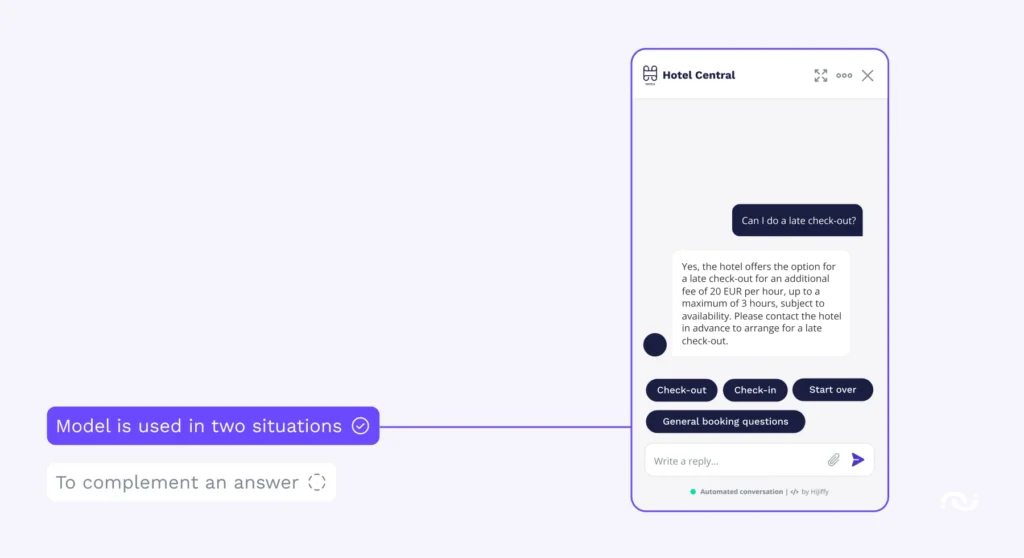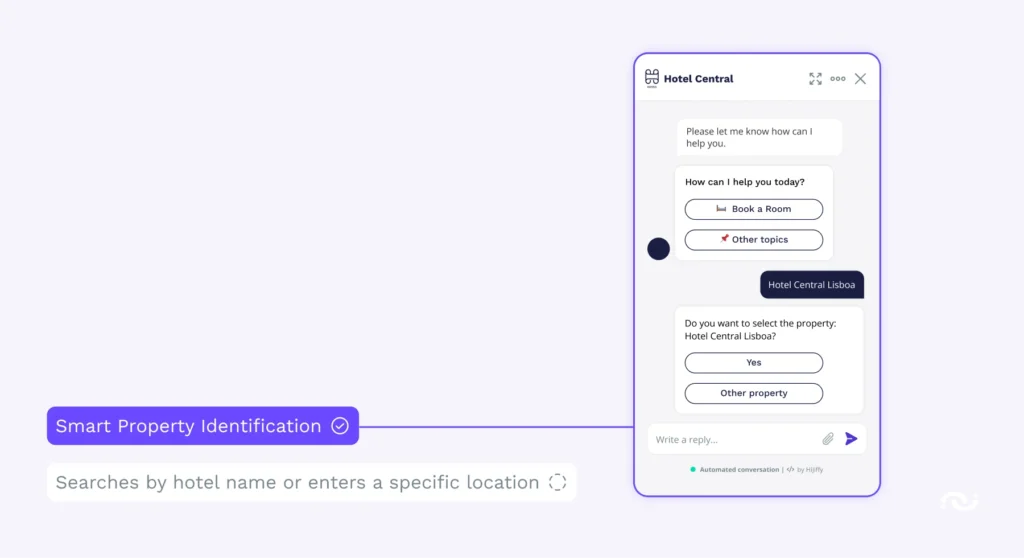All cards are on the table. What's your pick?
In the Explained series of blog posts, we break down complex technologies incorporated in our artificial intelligence, Aplysia. In this entry, we are exploring syntax and semantic analysis. We start with a broader overview and move on to specific features incorporated in our AI and show how they work with practical examples.
At HiJiffy, we are at the forefront of creating intelligent chatbots that transform guest communications. Our expertise in conversational AI leverages the integration of both syntax and semantic techniques. In the simplest terms, they relate to language structures and the meaning of words, so you can understand how essential they are for chatbots.
The syntax is an area of study that governs how words are arranged to form coherent sentences. Semantics focus on what those words represent and how they convey information. Incorporating them in our AI-powered chatbot allows us to understand and respond to human questions with unparalleled precision and relevance.
Syntax analysis (or syntactic analysis) is a methodology for studying conversational language using formal grammar rules. Syntax assigns semantic structure to text. In our AI system, syntax is essential for interpreting and comprehending interactions between hotels and (prospective) guests. By focusing on the structural features of language, we ensure that our algorithms correctly understand user input.
Semantic analysis (or semantics) deals with understanding the meaning and context of language. It is a complicated task for computers since humans usually rely on their intuition and linguistic skills to interpret words, signs and sentence structures. This is why semantic techniques play an important role in our system. By examining the complexities of user queries, we ensure that our answers are accurate and contextually appropriate.
In order to optimise the accuracy of chatbot answers, the strategies of both fields are incorporated into our AI. By leveraging them, we make sure that the structure and context of the language are known to our models and systems, so they can produce the correct, appropriate answers.
Our proprietary model, developed based on eight years of hospitality-specific data, was built to achieve the highest level of accuracy. This model is exclusive to HiJiffy and has a wide variety of semantic statements that are difficult to understand by other models and which end up being the foundation of our conversational system. This model integrates into our system alongside other machine learning and deep learning algorithms, enhancing its capabilities.
At its core, the Proximity feature employs syntax and semantics technologies to enhance the capability of the model. It is frequently applied when decoding exceptionally complex user messages with highly complex semantic structures. This model provides the closest answers relevant to the provided topic, so our chatbot would provide correct results.
This model is used in two situations:


To improve the accuracy and helpfulness of our virtual concierge (in-stay chatbot), we have developed a Message Categorisation Model which also applies the principles of syntax and semantics. This model categorises incoming messages into three main types: Requests, Complaints, and General Questions (Other Topics).
How it works:
Let’s take a look at a few examples.
Example 1: Request
Example 2: Complaint
Example 3: General Question (Other Topics)
This intelligent categorisation ensures that guest issues are addressed swiftly and efficiently, having a positive impact on the guest experience.
Our innovative Smart Property Identification system is designed to simplify the search for hotels within a specific group. This functionality enables the HiJiffy chatbot to quickly and accurately identify a group’s properties when a potential guest searches by hotel name or enters a specific location.
Let’s see how it works through a specific example.
Example 1 – Hotel name search

Example 2 – Location search:
The Sentences Summarisation feature handles instances where guests provide lengthy and detailed messages. By summarising these messages, our system can efficiently extract the core intentions and requests, ensuring that the chatbot can respond accurately and promptly (Note: this feature is only available on certain channels, like Instagram).
When a guest sends a long message, the Sentences Summarisation feature analyses the text to identify the essential points. This process involves:
This summarised input allows the chatbot to understand the guest’s needs more quickly and provide a relevant and accurate response.
Here’s an example to illustrate that in practice.
One of our systems that makes extensive use of these syntax and semantics techniques is our translation system. Our advanced translation system minimises language barriers, allowing for perfect communication, regardless of the guest’s native language.
If you are interested in learning more about various technologies used in Aplysia, explore a section of our website dedicated to our artificial intelligence, follow HiJiffy on LinkedIn and subscribe to our newsletter:
This article is based on technical contributions by Eduardo Machado and Vanda Azevedo from HiJiffy’s AI Team.
Sign up for our monthly newsletter to receive free resources and updates on impactful AI applications in hospitality.